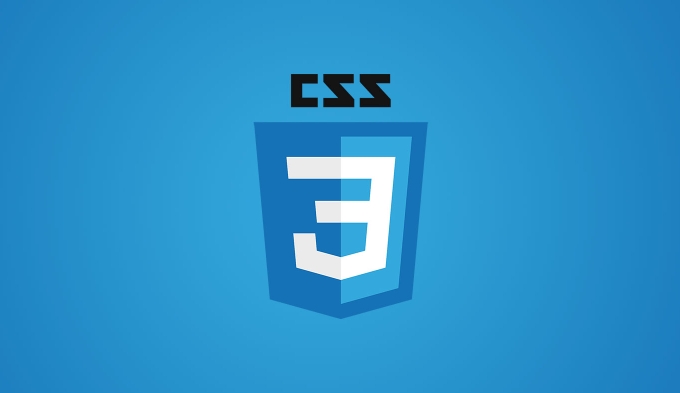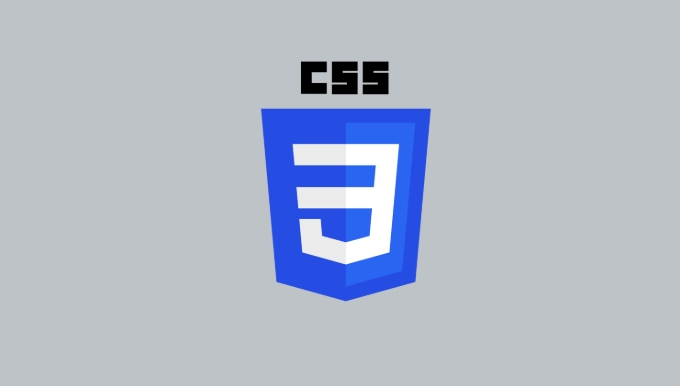How to set web page background image with CSS and optimize loading? First, select the appropriate background image, select JPG/WebP/PNG format according to the purpose, and pay attention to copyright in a unified style; second, use CSS attributes to set the background image, including background-image specified path, background-repeat control duplication, background-size and background-position adaptation to the screen; third, optimize the loading speed, improve the user experience by compressing images, using WebP format, delaying loading, adding transition effects and setting transition colors.

In web design, background images are an important element to enhance visual appeal. But if you want to use it well, adding a picture is not enough. You have to match the reasonable settings of the CSS attributes to make the page look good and stable.

How to choose the right background image?
The higher the picture selection, the better, the better. It should be judged based on the purpose. If it is a decorative large image background, you can choose a compressed JPG or WebP format; if small icons or patterns with transparent background are needed, PNG is more suitable. In addition, the picture style should also be consistent with the overall website to avoid visual confusion.

You should also pay attention to copyright issues, and don’t just download pictures from the Internet and use them directly. You can use resources from free photo galleries such as Unsplash and Pixabay, or create original content yourself.
What are the commonly used CSS properties for setting background images?
background-image is the most basic property, used to specify the image path:

background-image: url('bg.jpg');
If you also want the background not to be covered with repeated repetitions, add background-repeat: no-repeat; . This way the picture is displayed only once, which is suitable for the background of the homepage large picture.
In order to ensure that the pictures are adapted to different screen sizes, it is recommended to add:
-
background-size: cover;(image is scaled in a uniform ratio, covering the entire container) -
background-position: center;(center alignment)
These combined can make the background image perform well on various devices.
How to optimize loading speed and user experience?
A large background image is a common problem, slow loading is a There are several ways to alleviate this problem:
- Image compression: Use tools such as TinyPNG and ImageOptim to reduce file size.
- Using modern formats: WebP has higher compression rates and is not bad in quality than JPEG and PNG.
- Lazy loading: For background images that are not on the first screen, lazy loading technology can be used to wait for the user to scroll to the corresponding area before loading.
- Add a fade effect: It will be a bit abrupt when the image suddenly appears when loading. You can use CSS to transition to make it appear slowly.
You can also consider setting a transition color for areas that have not been loaded, such as:
background-color: #f5f5f5;
This way, even if the picture has not been loaded, the page will not look like it will not look space.
Basically that's it. The key to making good use of background images is to balance beauty and performance, and don’t blindly pursue high picture quality and ignore the loading experience.
The above is the detailed content of Working with background images and CSS properties. For more information, please follow other related articles on the PHP Chinese website!

Hot AI Tools

Undress AI Tool
Undress images for free

Undresser.AI Undress
AI-powered app for creating realistic nude photos

AI Clothes Remover
Online AI tool for removing clothes from photos.

Clothoff.io
AI clothes remover

Video Face Swap
Swap faces in any video effortlessly with our completely free AI face swap tool!

Hot Article

Hot Tools

Notepad++7.3.1
Easy-to-use and free code editor

SublimeText3 Chinese version
Chinese version, very easy to use

Zend Studio 13.0.1
Powerful PHP integrated development environment

Dreamweaver CS6
Visual web development tools

SublimeText3 Mac version
God-level code editing software (SublimeText3)

Hot Topics
 What is 'render-blocking CSS'?
Jun 24, 2025 am 12:42 AM
What is 'render-blocking CSS'?
Jun 24, 2025 am 12:42 AM
CSS blocks page rendering because browsers view inline and external CSS as key resources by default, especially with imported stylesheets, header large amounts of inline CSS, and unoptimized media query styles. 1. Extract critical CSS and embed it into HTML; 2. Delay loading non-critical CSS through JavaScript; 3. Use media attributes to optimize loading such as print styles; 4. Compress and merge CSS to reduce requests. It is recommended to use tools to extract key CSS, combine rel="preload" asynchronous loading, and use media delayed loading reasonably to avoid excessive splitting and complex script control.
 How to use Lotties in Figma
Jun 14, 2025 am 10:17 AM
How to use Lotties in Figma
Jun 14, 2025 am 10:17 AM
In the following tutorial, I will show you how to create Lottie animations in Figma. We'll use two colorful designs to exmplify how you can animate in Figma, and then I'll show you how to go from Figma to Lottie animations. All you need is a free Fig
 Breaking Boundaries: Building a Tangram Puzzle With (S)CSS
Jun 13, 2025 am 11:33 AM
Breaking Boundaries: Building a Tangram Puzzle With (S)CSS
Jun 13, 2025 am 11:33 AM
We put it to the test and it turns out Sass can replace JavaScript, at least when it comes to low-level logic and puzzle behavior. With nothing but maps, mixins, functions, and a whole lot of math, we managed to bring our Tangram puzzle to life, no J
 External vs. Internal CSS: What's the Best Approach?
Jun 20, 2025 am 12:45 AM
External vs. Internal CSS: What's the Best Approach?
Jun 20, 2025 am 12:45 AM
ThebestapproachforCSSdependsontheproject'sspecificneeds.Forlargerprojects,externalCSSisbetterduetomaintainabilityandreusability;forsmallerprojectsorsingle-pageapplications,internalCSSmightbemoresuitable.It'scrucialtobalanceprojectsize,performanceneed
 Does my CSS must be on lower case?
Jun 19, 2025 am 12:29 AM
Does my CSS must be on lower case?
Jun 19, 2025 am 12:29 AM
No,CSSdoesnothavetobeinlowercase.However,usinglowercaseisrecommendedfor:1)Consistencyandreadability,2)Avoidingerrorsinrelatedtechnologies,3)Potentialperformancebenefits,and4)Improvedcollaborationwithinteams.
 CSS Case Sensitivity: Understanding What Matters
Jun 20, 2025 am 12:09 AM
CSS Case Sensitivity: Understanding What Matters
Jun 20, 2025 am 12:09 AM
CSSismostlycase-insensitive,butURLsandfontfamilynamesarecase-sensitive.1)Propertiesandvalueslikecolor:red;arenotcase-sensitive.2)URLsmustmatchtheserver'scase,e.g.,/images/Logo.png.3)Fontfamilynameslike'OpenSans'mustbeexact.
 What is Autoprefixer and how does it work?
Jul 02, 2025 am 01:15 AM
What is Autoprefixer and how does it work?
Jul 02, 2025 am 01:15 AM
Autoprefixer is a tool that automatically adds vendor prefixes to CSS attributes based on the target browser scope. 1. It solves the problem of manually maintaining prefixes with errors; 2. Work through the PostCSS plug-in form, parse CSS, analyze attributes that need to be prefixed, and generate code according to configuration; 3. The usage steps include installing plug-ins, setting browserslist, and enabling them in the build process; 4. Notes include not manually adding prefixes, keeping configuration updates, prefixes not all attributes, and it is recommended to use them with the preprocessor.
 What are CSS counters?
Jun 19, 2025 am 12:34 AM
What are CSS counters?
Jun 19, 2025 am 12:34 AM
CSScounterscanautomaticallynumbersectionsandlists.1)Usecounter-resettoinitialize,counter-incrementtoincrease,andcounter()orcounters()todisplayvalues.2)CombinewithJavaScriptfordynamiccontenttoensureaccurateupdates.






